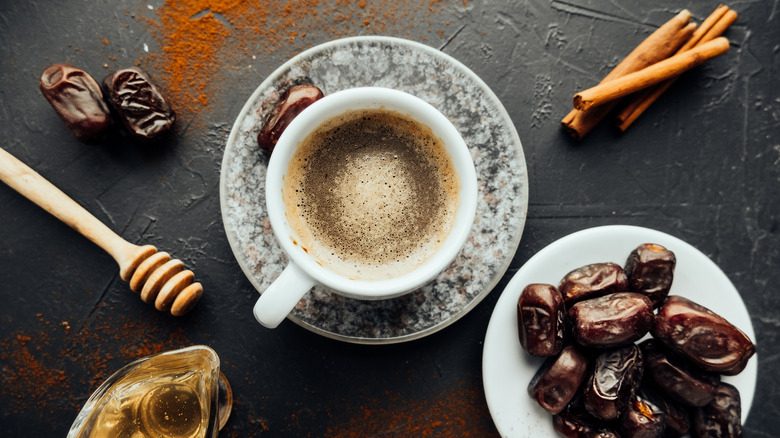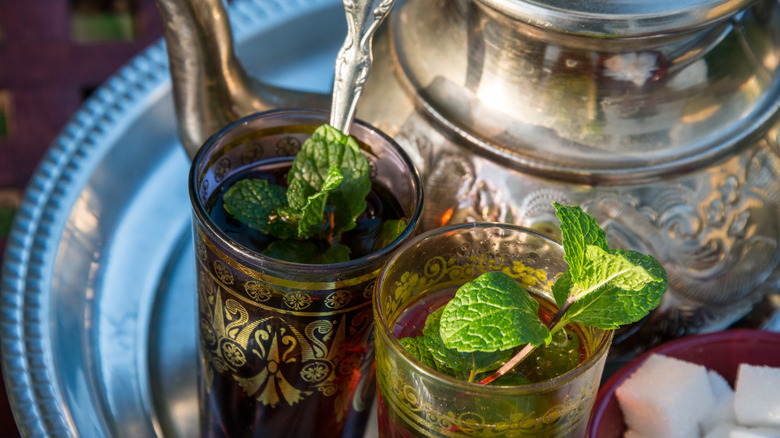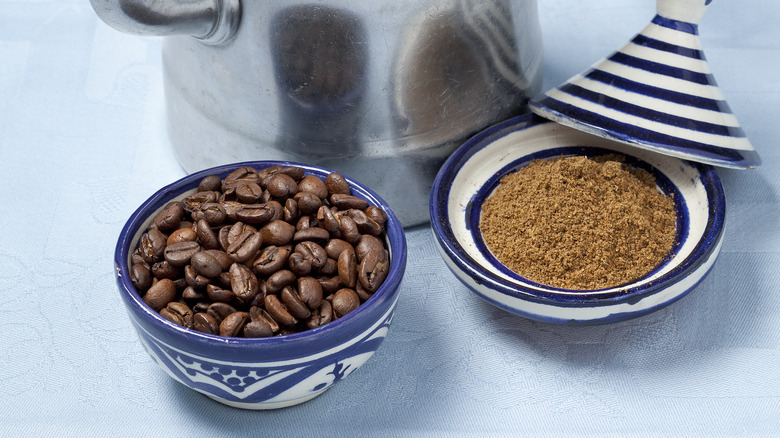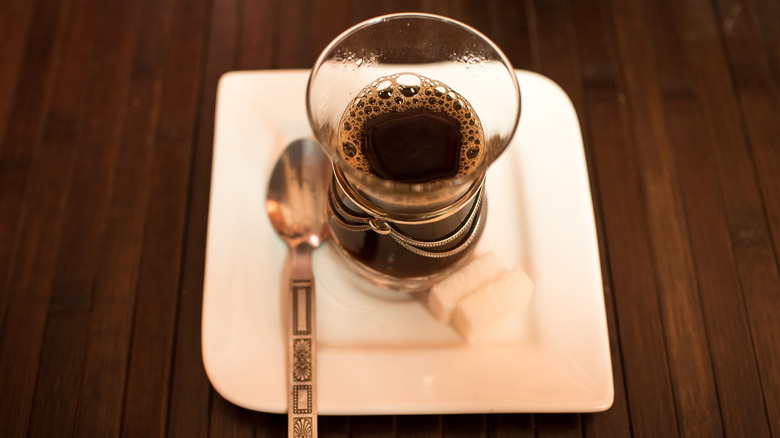The Robust Way Coffee Is Spiced Up In Morocco
From cinnamon-flavored café de olla to cardamom-laced Turkish coffee to a boozy rum-infused Pharisaeer Kaffee, the cup of joe comes in a wide range of flavorful varieties from many cultures. So it's no surprise that Morocco, a country with famous spice-laden food, has its own take. Yet, while the North African nation has a bustling café scene that's an important part of the social fabric, many tourists there struggle to find anything besides espresso-based drinks in a commercial setting.
That's because the fragrant Moroccan coffee beverage called Qahwa Ma'atra is typically reserved for the home. Accompanied by a traditional ritual, this aromatic brew is poured out by the female head of the household, with guests receiving the cups first. Several rounds of drinking are common, and even just holding the cup signals to the server that you want a refill.
With Qahwa Ma'atra containing upwards of five or more spices, odds are this beverage's delectable and complex flavors will have you asking for more. So let's dive into what makes it so unique.
The history of coffee in Morocco
The drink of choice in Morocco has historically been tea — especially the local variation of mint tea — rather than coffee. This is primarily due to coffee's contentious status during the earlier centuries. During the 17th century, Moroccan Islamic scholars debated on whether or not the consumption of the brew should be allowed, due to its stimulating effects, and some leaders even openly banned it.
Though the country may not have as notable a history of coffee consumption like that of Yemen, that doesn't mean there are no regional spins on the caffeinated beverage. Coffee beans made their way to Morocco in the 18th century, but it wasn't until the 20th century during French colonialism that cafés started popping up, leading to the popularity of the brew throughout the North African nation. Afterward, regional creations like Qahwa Ma'atra appeared too. Now, this uniquely Moroccan spiced coffee is prevalent in the domestic realm — just don't expect to find it in many cafés.
Ingredients in Moroccan spiced coffee
Of course, this fragrant cup of joe needs to start with a base of coffee. It's typically prepared with a bold, dark roast. While ground coffee works when making this drink, it's best to grind the beans yourself — not only will it maximize freshness and flavor, but it will also allow you to get the desired grind size.
Once the coffee is secured, it's time to draw from the spice rack. Many aromatics are added to Qahwa Ma'atra — from spices with sweet notes, such as cinnamon and cloves, to more savory, pungent inclusions, such as ginger and black pepper. The composition depends on the drinker's preferences, as well as family tradition.
A recipe for the Moroccan spiced coffee typically includes cloves, cardamom, cinnamon, and nutmeg. Black pepper, ginger, anise, and vanilla are less commonly used but are ideal additions for a more pungent cup. There's no incorrect formula for these aromatics — simply experiment, and see which combination best fits your tastes.
How Moroccan spiced coffee is made
With the ingredients assembled, it's time to start brewing. To make Qahwa Ma'atra, you can choose from a range of coffee preparation styles — including instant, drip, French press, espresso, and the traditional method, which involves boiling water in a pot and then adding ground coffee, spices, and sugar.
Like with the coffee beans, it's best to buy spices whole and grind them for each batch. While some grind the beans together with the spices, keep in mind that this will cause the flavors of the aromatics to linger on your grinder, which might affect the taste of any subsequent brews. To avoid this, grind the spices separately from the beans.
Next, the spices and coffee are stirred together — and any leftovers can be stored in an airtight jar for later use. Simply use a few tablespoons of the mixture, and prepare a batch of coffee the way you normally would. When using a French press, make sure not to press the grounds all the way to the bottom of the vessel — otherwise, the resultant cup may be bitter and not pleasant to consume. Once brewed, pour the coffee into cups, and add sugar and milk to taste. And most importantly, share this bouquet of flavors with friendly companions.



